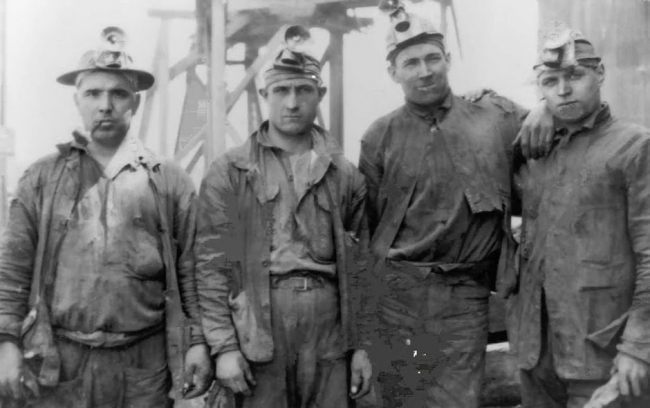The Federal government passed modest legislation to establish minimum ventilation requirements in underground coal mines and prohibit operators from hiring children under age 12. The statute applied only to mines in U.S. territories.
History
Early Laws: Incremental improvements in safety and health legislation
Public Law 61-179 created the Bureau of Mines within the Department of the Interior after a decade in which coal mine fatalities exceeded 2,000 annually. The Bureau’s safety and health role was limited to research and investigation, without inspection authority.
Public Law 77-49 granted Federal inspectors the right of entry into coal mines to make inspections. No safety or health regulations were mandated.
Public Law 80-328 created the first Federal safety standards for bituminous coal and lignite mines. A provision was included for Federal inspectors to notify the mine operator and State mine agency of violations. No enforcement provisions were included. The standards expired after one year.
The Federal Coal Mine Safety Act of 1952 (Public Law 82-552) placed emphasis on preventing major disasters. The Act had a number of key components including:
- Required annual inspections in certain underground coal mines
- Limited enforcement authority given to the Bureau of Mines, including power to issue violation notices and imminent danger withdrawal orders
- Mandatory safety standards for underground coal mines, with more stringent standards for "gassy" mines
- Assessment of civil penalties against mine operators for noncompliance with withdrawal orders or for refusing to give inspectors access to mine property
No provision was made for monetary penalties for noncompliance with safety standards, however. Also, all surface coal mines were exempt under the Act, along with all mines with fewer than 15 employees.
Public Law 87-300 authorized the Bureau of Mines to conduct a study covering the causes and prevention of injuries and health hazards in metal and nonmetal mines. Federal officials were given the right of entry to collect information. The Law excluded coal and lignite mines.
Public Law 89-376 extended coverage of the Federal Coal Mine Safety Act of 1952 to small underground coal mines. It provided for withdrawal orders in cases of repeated unwarrantable failures to comply with standards. Education and training programs were expanded as well.
The Federal Metal and Nonmetallic Mine Safety Act of 1966 (Public Law 89-577) set up procedures for developing safety and health standards for metal and nonmetal mines. Standards could be advisory or mandatory. One annual inspection was required for underground mines, and Federal inspectors were given the authority to issue notices of violation and orders of withdrawal. Education and training programs were also expanded.
The Mine Act: Creation of MSHA
The Federal Mine Safety and Health Act of 1977 (Public Law 95-164), commonly known as the Mine Act, is the legislation that currently governs MSHA’s activities. Mining fatalities dropped sharply under the Mine Act.
The Mine Act transferred enforcement responsibilities from the Department of the Interior to the Department of Labor, and named the new agency the Mine Safety and Health Administration. Additionally, the Mine Act established the independent Federal Mine Safety and Health Review Commission to provide independent review of most of MSHA's enforcement actions.
The Mine Act amended the 1969 Coal Act in a number of significant ways, and consolidated all federal health and safety regulations of the mining industry – both coal and metal/nonmetal – under a single statutory scheme.
Key components of the Mine Act include:
Four annual inspections required at all underground mines
- Two annual inspections required at all surface mines
- Strengthened and expanded rights for miners
- Enhanced protection of miners from retaliation for exercising such rights
- Mandatory miner training provisions established
- Mine rescue teams required for all underground mines
To learn more about the history and contents of the 1977 Mine Act, please see House Report No. 95-312 and Senate Report No. 95-181.
In 2006, the MINER Act (Public Law 109-236) amended the Mine Act of 1977 to require:
- Mine-specific emergency response plans in underground coal mines
- New regulations regarding mine rescue teams and sealing of abandoned areas
- Prompt notification of mine accidents
- Enhanced civil penalties
To learn more about the history and contents of the 2006 MINER Act, please see Senate Report No. 109-365.
The Coal Act: Major advances in health and safety legislation
The Federal Coal Mine Health and Safety Act of 1969 (Public Law 91-173), generally referred to as the Coal Act, was the most comprehensive and stringent Federal legislation governing the mining industry to date.
Key components of the Coal Act include:
- Four annual inspections required at all underground coal mines
- Two annual inspections required at all surface coal mine
- Mandatory fines for all violations
- Criminal penalties for knowing and willful violations
- Individual State enforcement plans discontinued
- Safety standards for all coal mines strengthened and health standards adopted
- Specific procedures created for developing improved mandatory safety and health standards
- Training grant program instituted
- Miners given the right to request a Federal inspection
- Miners disabled by black lung disease provided benefits
To learn more about the history and contents of the 1969 Coal Act, please see House Report No. 91-563 and Conference Report No. 91-761.
In 1973, the Secretary of the Interior created the Mining Enforcement and Safety Administration (MESA) as a new departmental agency separate from the Bureau of Mines. MESA assumed the safety and health enforcement functions formerly carried out by the Bureau. This was to avoid any appearance of a conflict of interest between the enforcement of mine safety and health standards and the Bureau's responsibilities for mineral resource development.

